UPDATED: SEPTEMBER 29, 2024
Cotton Threads
Understanding Cotton Staples
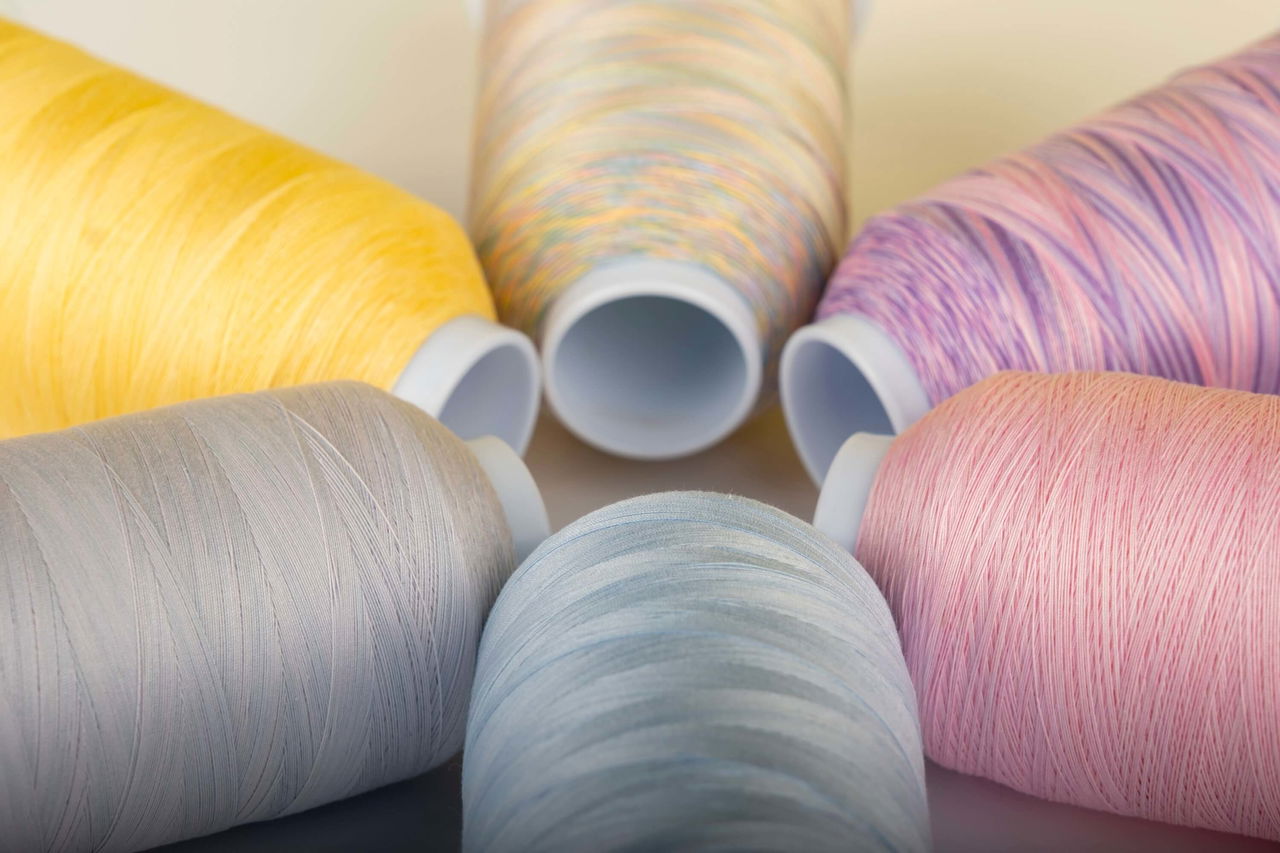
Cotton, one of the most timeless crops, has a secret that's crucial for anyone passionate about sewing or quilting. It's all about the staples! Not those metal, elongated U-shaped fasteners we use to fasten pieces of paper together. No, we’re talking about cotton staples, and there's a world of difference between short-staple, long-staple, and extra-long staple cotton fibers. Think of them as the ingredients in your favorite recipe; the quality matters immensely.
Cotton Bolls: Fluffy and soft
As a cotton plant matures, it flowers, and after the flowers fall away, what's left behind is a mass of white cotton fibers called a cotton boll. These bolls are protected by a tough, green outer layer called a boll husk (like most natural fruits, the outer shell protects the fruit inside). As the husk dries and the boll matures, it splits open and reveals the soft, white, fluffy cotton fibers. These fibers are attached to tiny seeds. Each cotton boll contains up to 50 seeds and 20,000 individual fibers!
Let’s use our imagination. Close your eyes and imagine a soft, fluffy cumulus cloud floating in the sky. Its soft edges and bright white color are reminiscent of the cotton boll inside the cotton plant. The boll is the fruit of the cotton plant and is used in fabrics and threads. A cotton boll is roughly the size of a small walnut or a large grape.
Each cotton boll contains up to 50 seeds and 20,000 individual fibers!
The differences between short, long, and extra-long staples
Cotton staple refers to the length of the individual cotton fibers that make up the boll. Think of these fibers like the strands of hair on your head. Just as hair can be short, medium, or long, cotton fibers also vary in length. The length of these fibers is critical because it critically impacts its quality as a thread.
Before diving into the standard fare long staple and more luxurious extra-long staple cotton, let's understand short-staple cotton. Short staples measure less than 1 1/8". These staples are the everyday workhorses within the world of cotton thread (typically for sewing garments together) and fabrics (typically for garments made from cotton). They are the fast food of fabrics – quick, accessible, and cost-effective. You'll find them in mass-produced, budget-friendly clothing and standard household fabrics. Their shorter length means more splices are needed when spinning into thread or yarn for fabric, resulting in a thread prone to pilling and wear (ahem…. lint). They're the practical choice for items not destined for longevity or heavy use.
Moving to long-staple cotton, these fibers range between 1 1/8" to 1 1/4" in length. They are like the dependable sedan of the cotton world – reliable and sturdy. You'll find them in everyday items like bed sheets, towels, and some threads. However, long-staple cotton may get the job done when sewing and quilting, but not with the finesse nor high-touch experience you may hope for. Long-staple cotton threads will have more lint than extra-long-staple cotton threads. While absolutely true that all cotton threads will displace some lint when stitching, ask yourself this: would you rather have the least amount of lint possible? Less lint means less buildup, less time cleaning your machine, and, most importantly -- more time quilting!
Now, the cream of the crop, extra-long-staple cotton fibers. These fibers stretch out to 2” long. While the jump from 1 1/4” to 2” may not seem like much, it is a game-changer in the world of cotton. Imagine this cotton as the luxury car of fibers – it has the power, strength, and durability to withstand high speed and tight tension and boasts unparalleled smoothness and softness. There’s a reason why every cone or spool of thread that uses extra-long-staple cotton will print “Extra-long staple” or the abbreviation “ELS” because it’s the best cotton fiber.
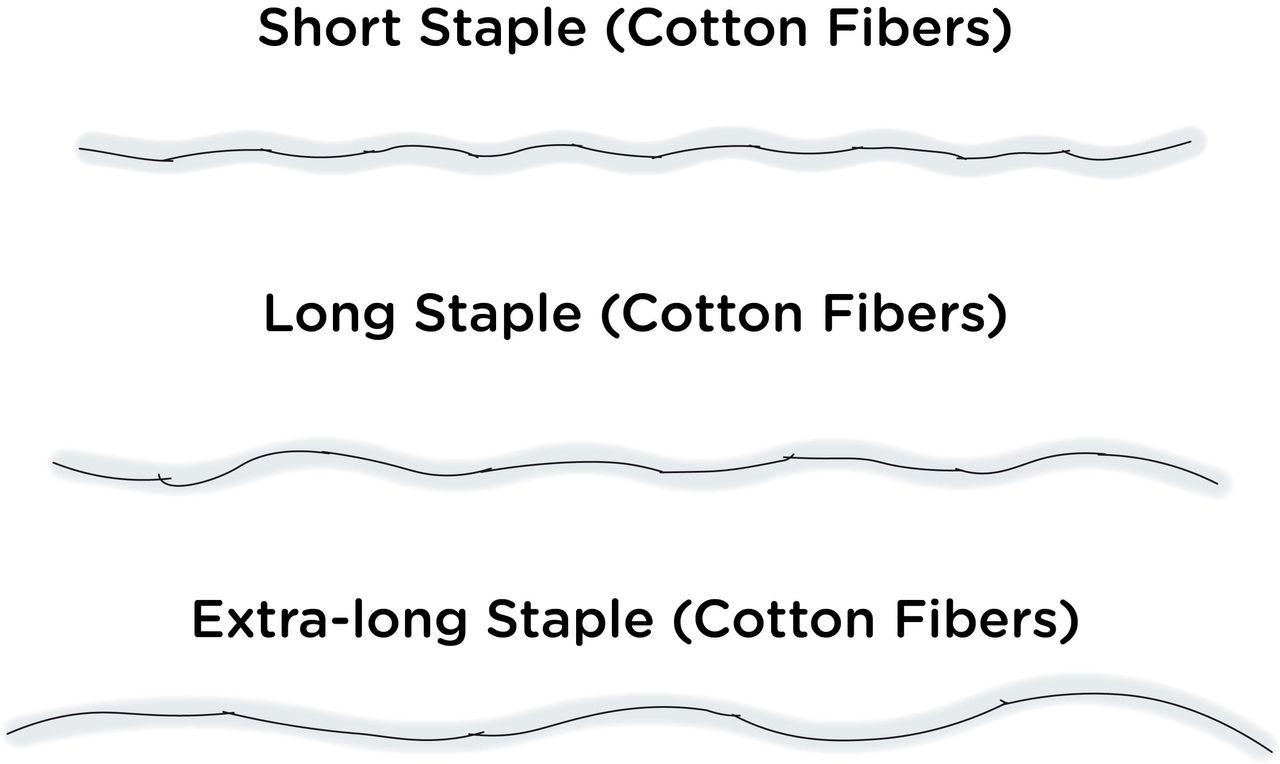
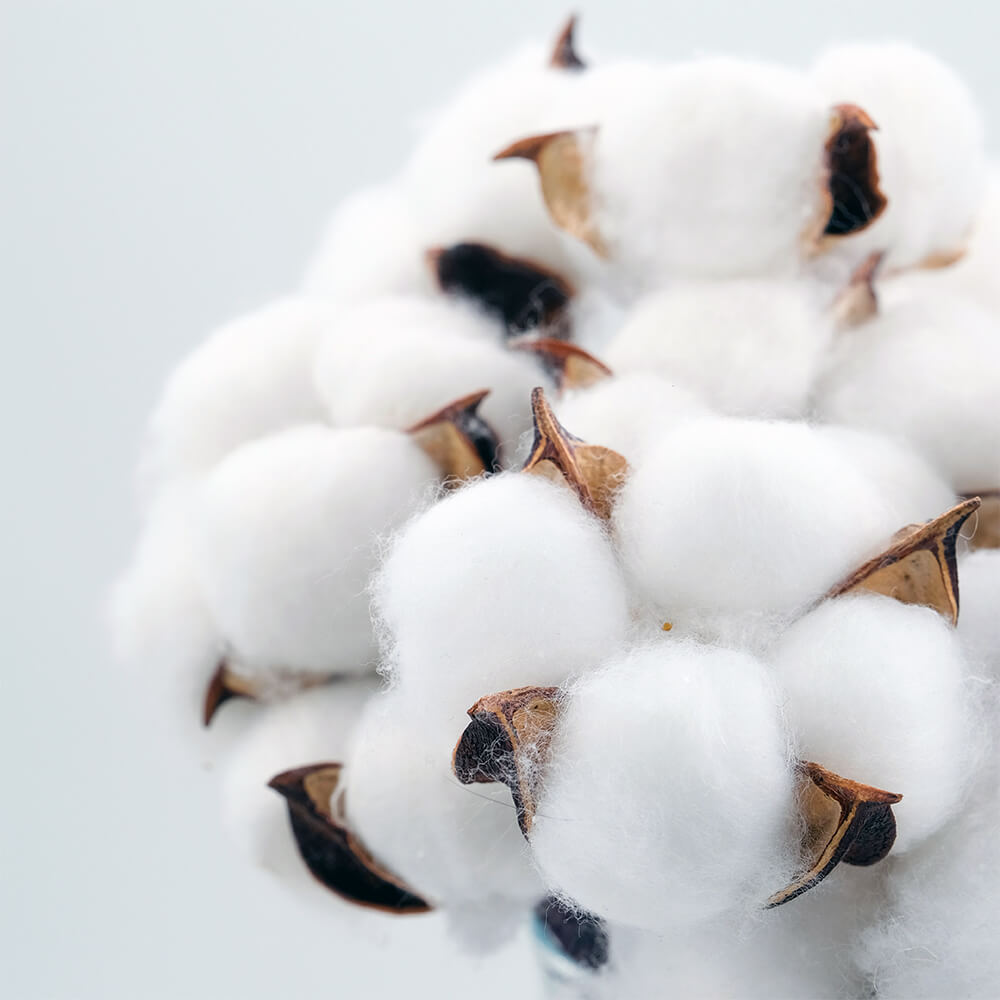
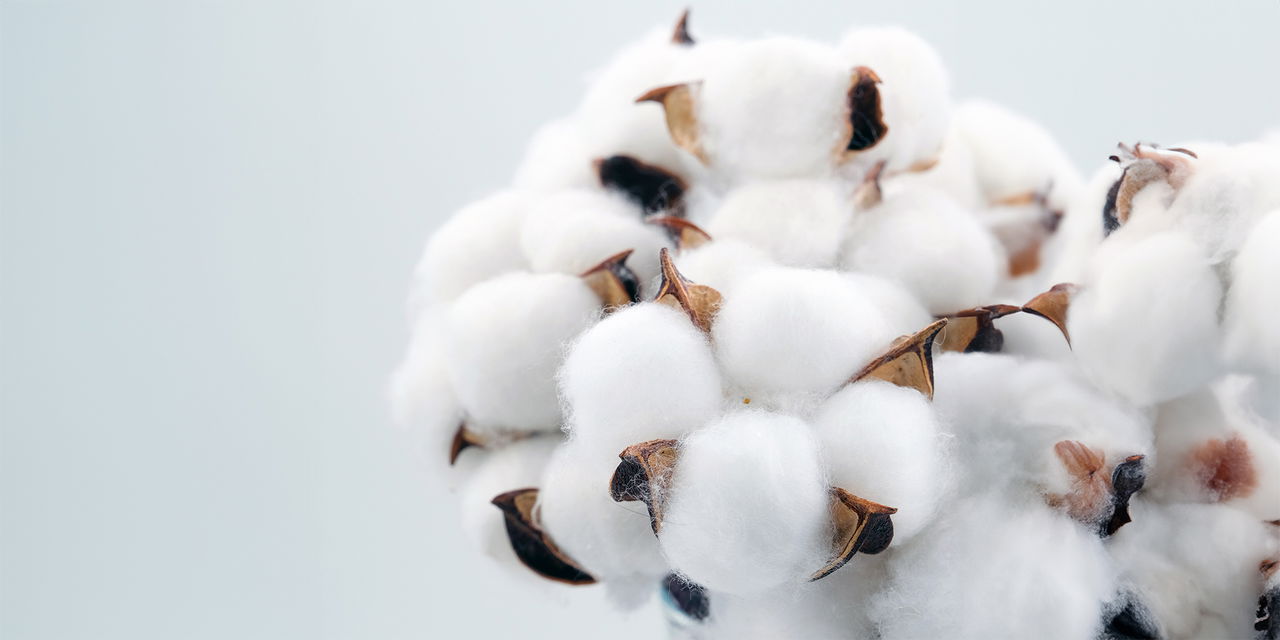


Short Staple Cotton Fibers
Long Staple Cotton Fibers
Extra-long Staple Cotton Fibers
The Sewing Machine Analogy
I have many quilter friends who also love to sew. One friend shared an analogy that helped her remember the differences in cotton staple lengths by comparing them to sewing machines.
Long Staple Cotton: Now, picture an upgraded, mid-range sewing machine—one that is sturdy and reliable, with smoother stitching and more consistent tension. This machine has a variety of functions and performs well on a range of fabrics without jamming or skipping stitches every few minutes. Like a long staple cotton thread, which is smoother and stronger due to its longer fibers, this machine delivers a satisfying sewing experience and produces better results. Quilters using this machine find that they’re spending more time stitching and less time troubleshooting, just as long staple cotton threads are stronger, smoother, and less prone to breaking.
Extra-Long Staple Cotton: Finally, consider the top-of-the-line sewing machine—the one with all the bells and whistles: automatic threading, computerized stitching patterns, and flawless tension control. This machine is a joy to use, delivering perfect stitches every time with no frustrations. It sews through any fabric like butter, providing a luxurious experience that elevates your entire sewing project. Extra-long staple cotton threads are much like this high-end machine—they’re the strongest, smoothest, and produce very little lint. Their silky feel and durability make every quilting or sewing project feel like a professional endeavor, offering the finest results for those prioritizing quality and longevity.
Short Staple Cotton: Imagine an entry-level sewing machine—the kind you might buy for a grandchild, a beginner or for occasional use. It does the job at first glance, stitching the basics together, but it's prone to skipping stitches, jamming, and uneven tension. You may find yourself constantly readjusting the settings and wondering why your fabric puckers no matter how carefully you sew. It gets the job done, but not without a fair amount of frustration. Similarly, short staple cotton does the job, but its shorter fibers result in more lint, weaker seams, and less durability over time. If your thread doesn’t specify long staple, extra-long staple, or ELS cotton, it’s likely made of short staple cotton—functional, but far from the smooth, consistent experience a higher-quality option provides.
Choosing the right sewing machine can make or break your experience, and so can choosing the right cotton thread. Extra-long staple cotton, like the top-tier sewing machine, provides the best performance and ensures your finished projects are something to be proud of for years to come.
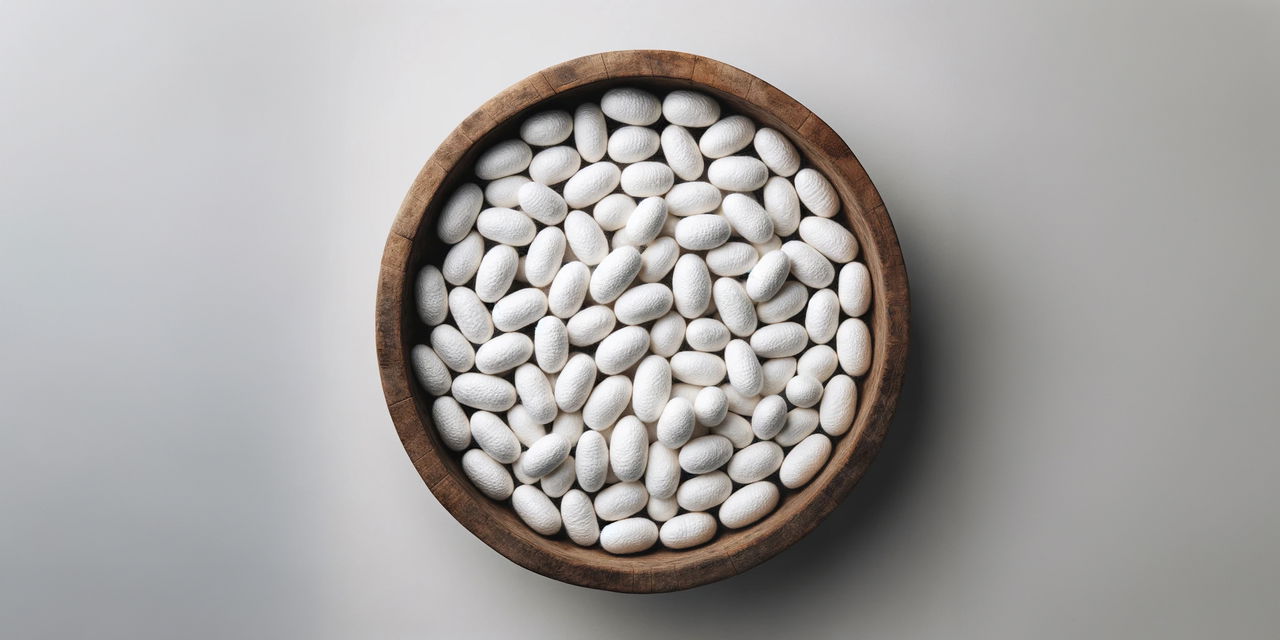
Conclusion
Extra-long-staple cotton threads might seem like a small detail for quality-conscious sewists and quilters, but they can have an outsized impact on your projects. They're not just threads; they're the stitches that hold your quilt's story together. From the resilience of the quilt that hugs your grandchild to the show-ready quilt that turns heads, these threads represent the love and care you’ve dedicated to creating these wonderful works of art.
Happy quilting!
education article by bob purcell
published on August 19, 2024
More Silk Thread Articles
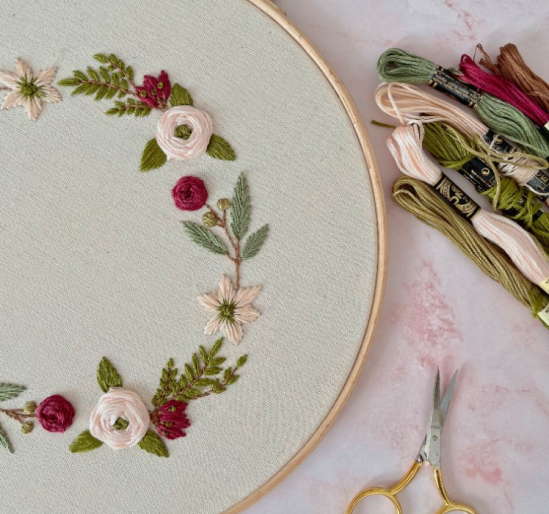
Lorem ipsum
6 Things You Didn’t Know About Silk
Lorem ipsum dolor sit amet consectetur. Risus volutpat venenatis diam eu.
read More

Lorem ipsum
Material Guide: How Sustainable is Silk?
Lorem ipsum dolor sit amet consectetur. Risus volutpat venenatis diam eu.
read More

Lorem ipsum
How to Build Better Silk
Lorem ipsum dolor sit amet consectetur. Risus volutpat venenatis diam eu.
read More